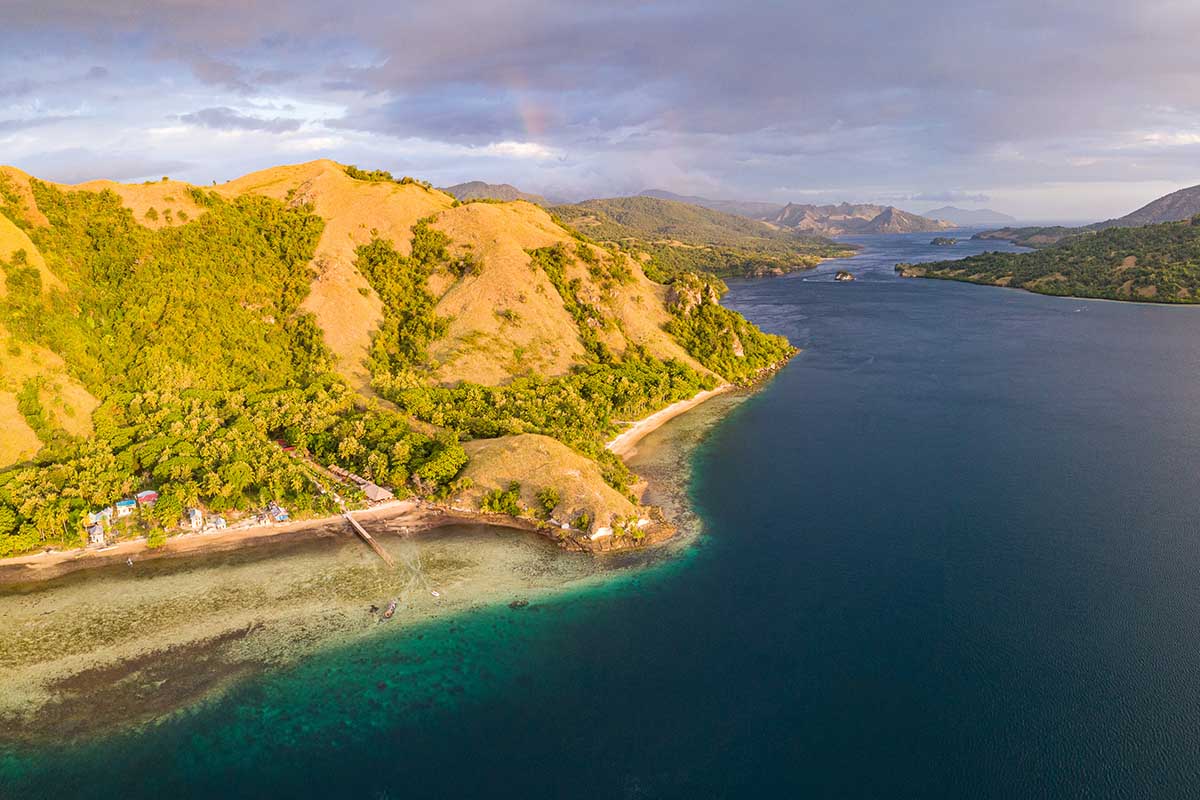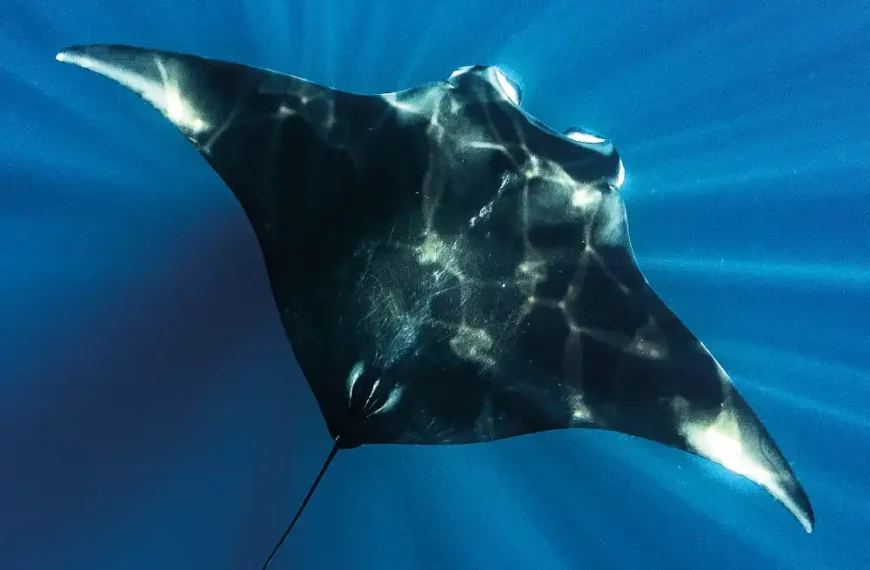
A newly-published five-year study from the Marine Megafauna Foundation (MMF) and Australia’s Murdoch University has found that the waters of Komodo National Park, Indonesia, may be home to some of the largest aggregations of manta rays in the world.
Reef mantas (Mobula alfredi) can reach up to 5m in wingspan – or ‘disc width’ – and are present in shallow, coastal habitats where they feed and visit coral reef cleaning stations, where courtship behaviour is also frequently observed. As a result, they are among the most sought-after sightings by marine tourists. Over the years, scientists have teamed up with the dive community to source identification photos of the manta rays, which can be submitted by citizen scientists to the database at MantaMatcher.org.
The photographs from the Komodo study were taken between 2013-2018, with most of them captured at just four locations from the more than 20 that are commonly visited by tourist boats. A total of 1,085 individual manta rays were identified from more than 4,000 photographs by the unique spot patterns present on the underside of the mantas’ bodies.
You may also like
‘People love manta rays,’ said MMF co-founder and co-author of the study, Dr Andrea Marshall. ‘ The rise of the number of people engaging in SCUBA diving, snorkelling, and the advent of affordable underwater cameras meant that photos and videos taken by the public during their holidays could be used to quickly and affordably scale data collection.’
Time and location data submitted with the photographs allowed the scientists to construct sighting histories of each animal, which was then analysed using statistical movement models to predict the likelihood that manta rays are inhabiting, or travelling in between, specific sites.
The study’s results showed that some manta rays moved around the park and others as far as the Nusa Penida MPA, some 450 km to the west, but overall, individual manta rays showed they had preferences for specific sites within Komodo National Park.

‘I found it very interesting how some manta rays appear to prefer spending their time in some sites more than others, even when sites are 5 km apart, which are short distances for manta rays,’ said lead author of the study, Dr Elitza Germanov. ‘This means that manta rays which prefer sites where fishing activities continue to occur or that are more popular with tourism will endure greater impacts.’
Fishing activities have been prohibited in many coastal areas within Komodo National Park since 1984, and have been protected nationwide since 2014. However, due to a combination of illegal fishing activity and the fact that manta rays travel through waters that are heavily – but legally – fished, mantas continue to face a number of threats from fisheries. The research team noted that approximately 5 per cent of Komodo’s manta population have permanent injuries that are likely the result of encounters with fishing gear.

While marine tourism has proved greatly beneficial in the drive to protect manta rays, and increase in human activity at preferred manta sites can have a significant negative effect on both the animals and their habitats. During the course of the study, the number of tourist visits to the sites involved grew by 34 per cent, causing the Komodo National Park Authority to limits on the number of boats and people that can visit one of the most famous manta sites in 2019.
‘This study shows that the places where tourists commonly observe manta rays are important for the animals to feed, clean, and mate,’ said Komodo National Park employee Ande Kefi. ‘This means that the Komodo National Park should create measures to limit the disturbance at these sites. I hope that this study will encourage tourism operators to understand the need for the regulations already imposed and increase compliance.’
The complete paper ‘Residency, movement patterns, behavior and demographics of reef manta rays in Komodo National Park’ by Elitza Germanov et al, (2022) is published by PeerJ. DOI: 10.7717/peerj.13302








